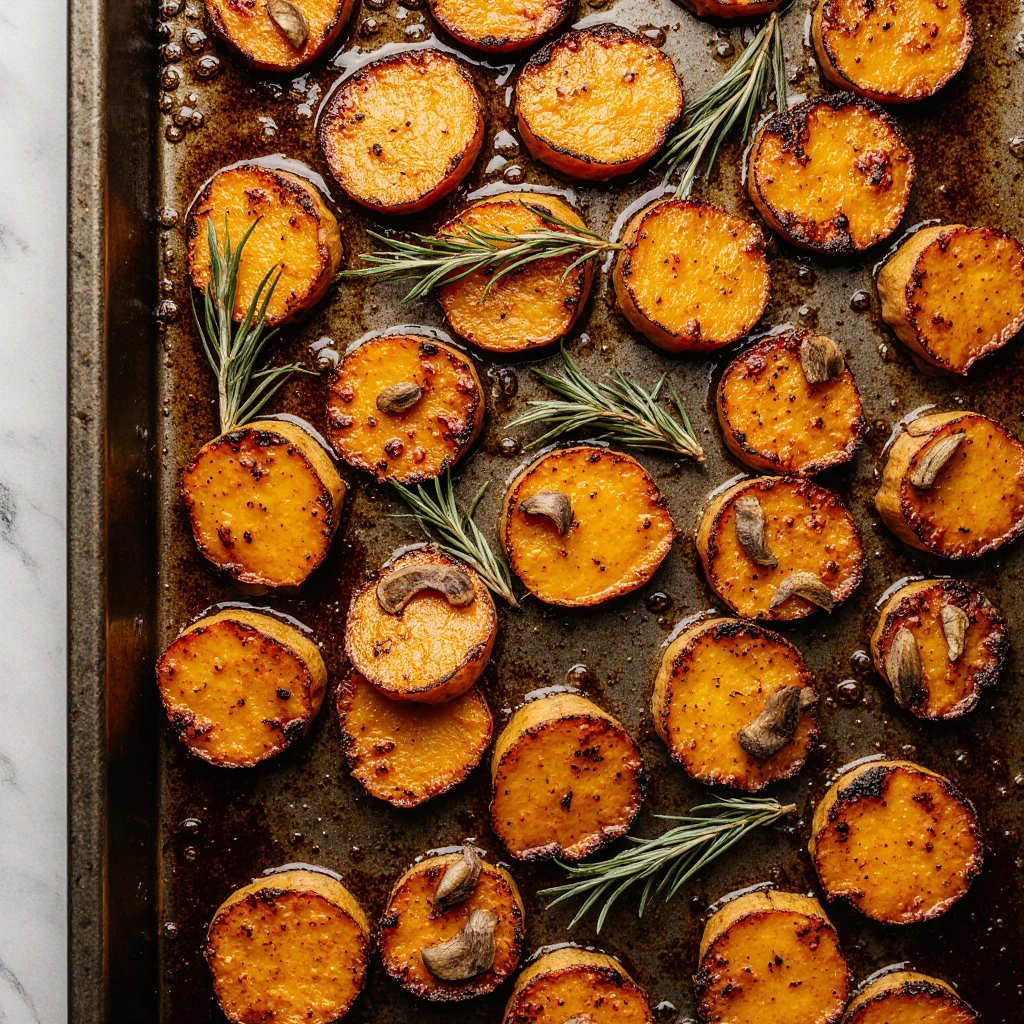Delicious Melting Potatoes: Easy Dinner Recipe
When it comes to dinner recipes that combine comfort, flavor, and simplicity, few dishes stand out like melting potatoes. Known for their crisp exterior and soft, buttery interior, melting potatoes are a side dish that elevates any meal, from a casual weeknight dinner to a festive holiday gathering. They are more than just roasted potatoes; they melt in your mouth with a luxurious texture and deep savory flavor. This post is a complete guide to melting potatoes, offering everything from history, cooking tips, and variations to serving suggestions and common mistakes to avoid. By the end, you’ll understand why melting potatoes are a dinner essential and how you can master them in your own kitchen.
What Are Melting Potatoes?
Melting potatoes are thick slices of Yukon Gold or russet potatoes roasted in butter, broth, and seasonings until they become crispy on the outside and tender on the inside. The cooking method allows them to absorb liquid, creating an almost custard-like center. Unlike regular roasted potatoes, melting potatoes are basted with broth near the end of cooking, which infuses them with flavor and gives them their signature melt-in-the-mouth quality. This makes them one of the most versatile recipes for dinner sides.
A Brief History of Melting Potatoes
While melting potatoes have gained popularity in modern American cooking, their inspiration can be traced to French cuisine. French chefs have long perfected the art of layering potatoes, butter, and stock in recipes such as pommes fondantes (literally “melting potatoes”). Over time, home cooks adapted these techniques into a simplified yet delicious recipe that could be made in everyday kitchens. Today, melting potatoes are celebrated not just for their French-inspired origins but also for their universal appeal as a quick, elegant dinner side.
Why Melting Potatoes Are Perfect for Dinner
Dinner recipes often call for balance: something hearty, flavorful, and easy to prepare. Melting potatoes check all these boxes. They require minimal ingredients, pair beautifully with proteins like roasted chicken, steak, pork chops, or fish, and they deliver maximum flavor with minimal effort. Additionally, they can be made in large batches, making them ideal for family dinners or holiday gatherings. Their versatility makes them a staple for both casual weeknight meals and special occasions.
Ingredients for Classic Melting Potatoes
The beauty of melting potatoes lies in their simplicity. Here are the key ingredients you’ll need:
-
Potatoes: Yukon Gold or russet potatoes are ideal for their balance of starchiness and creaminess.
-
Butter: Provides rich flavor and helps achieve the crispy exterior.
-
Olive oil: Balances the richness of the butter and prevents burning.
-
Chicken or vegetable broth: Adds moisture and infuses flavor.
-
Garlic: For aromatic depth.
-
Fresh herbs: Thyme, rosemary, or parsley are classic choices.
-
Salt and pepper: Essential for seasoning.
Timing
One of the great advantages of melting potatoes is their straightforward timing. Preparation takes about 10 minutes, while roasting requires 40 to 45 minutes. This makes them a practical recipe for weeknight dinners without compromising on taste. For holidays or larger meals, you can prepare them ahead of time by par-cooking and then finishing them in the oven before serving.
Step-by-Step Instructions
Step 1: Prepare the Potatoes
Peel the potatoes and cut them into thick slices, about 1 inch thick. This ensures they hold their shape while developing a crisp crust and a soft interior.
Step 2: Preheat the Oven
Set your oven to 425°F (220°C). A high roasting temperature is essential to achieve a golden brown crust.
Step 3: Season and Arrange
Place the potato slices in a single layer on a baking sheet or roasting pan. Drizzle with olive oil and melted butter, then season generously with salt and pepper. Toss to coat evenly.
Step 4: Roast the First Side
Roast for 15 to 20 minutes until the bottoms turn golden brown. Flip the potatoes and roast for another 15 minutes.
Step 5: Add Broth and Garlic
Pour chicken or vegetable broth into the pan, adding minced garlic and herbs. Roast for an additional 10 to 15 minutes. The broth will reduce, leaving the potatoes infused with flavor.
Step 6: Serve Immediately
Remove the potatoes from the oven and transfer them to a serving dish. Garnish with fresh herbs and serve hot.
Nutritional Information
A typical serving of melting potatoes (about 3 to 4 slices) provides approximately:
-
Calories: 250
-
Carbohydrates: 30g
-
Protein: 4g
-
Fat: 12g
-
Fiber: 3g
-
Sodium: 200mg
While indulgent due to butter and oil, they are a satisfying side dish that fits within a balanced diet.
Healthier Alternatives
If you want to make melting potatoes lighter, try these adjustments:
-
Use olive oil instead of butter for a heart-healthier fat.
-
Substitute sweet potatoes for a nutrient-rich twist.
-
Reduce sodium by using low-sodium broth.
-
Add more herbs and spices to boost flavor without extra fat.
Variations of Melting Potatoes Recipes
One of the joys of melting potatoes is their adaptability. Here are some popular variations:
-
Cheesy Melting Potatoes: Add shredded Parmesan or Gruyère during the last 5 minutes of roasting.
-
Herb-Infused Melting Potatoes: Incorporate sage, oregano, or dill for unique flavor profiles.
-
Spicy Melting Potatoes: Add paprika, chili powder, or cayenne pepper for a bold kick.
-
Sweet Potato Melting Potatoes: Use sweet potatoes for a naturally sweet version that pairs well with pork or turkey.
-
Mediterranean Style: Add lemon juice, feta, and olives for a bright, tangy variation.
Serving Suggestions for Dinner
Melting potatoes are a flexible side dish that complements almost any dinner recipe. Here are some perfect pairings:
-
Roasted chicken with herb gravy
-
Grilled steak with garlic butter
-
Pork tenderloin with apple compote
-
Baked salmon with dill sauce
-
Holiday turkey with cranberry sauce
They also pair wonderfully with vegetarian mains like lentil loaf, stuffed bell peppers, or mushroom bourguignon.
Common Mistakes to Avoid
While melting potatoes are simple to make, here are a few common errors:
-
Cutting too thin: Thin slices may burn instead of developing the creamy interior.
-
Not flipping: Failing to flip results in uneven browning.
-
Skipping broth: The broth step is crucial for achieving the melt-in-the-mouth texture.
-
Overcrowding the pan: This prevents even roasting; use a large enough pan.
-
Using waxy potatoes: Red or fingerling potatoes don’t produce the same results as Yukon Golds or russets.
Storing Tips
If you have leftovers, store them in an airtight container in the refrigerator for up to 3 days. To reheat, place them in the oven at 350°F (175°C) for 10 to 15 minutes to restore their crisp texture. Avoid microwaving, as this makes them soggy.
Why This Recipe Works
The genius of melting potatoes lies in combining two cooking techniques: roasting and braising. Roasting creates a crisp crust, while braising in broth creates a creamy interior. This dual method is what separates melting potatoes from ordinary roasted potatoes and makes them stand out in dinner recipes.
FAQs
Can I make Crispy potato slices ahead of time?
Yes, you can roast them halfway, refrigerate, and then finish roasting with broth just before serving.
What’s the best potato for it?
Yukon Gold is ideal, but russets also work. Avoid waxy varieties.
Can I make them vegan?
Yes, substitute vegetable broth for chicken broth and use vegan butter.
Can I freeze Crispy potato slices?
Freezing is not recommended, as the texture becomes grainy.
Do I need to peel the potatoes?
Peeling is recommended for the smoothest texture, but leaving the skins on adds rustic appeal.
Conclusion
Melting potatoes are more than just another dinner side dish—they’re a culinary experience that transforms a simple ingredient into something extraordinary. Their crispy exterior and velvety interior make them irresistible, while their versatility allows them to pair with almost any meal. Whether you’re preparing a weekday dinner, hosting friends, or cooking a holiday feast, melting potatoes deserve a place on your table. With this detailed guide, you now have everything you need to master the recipe, experiment with variations, and avoid common mistakes. Elevate your dinner recipes with melting potatoes and discover why they have become a beloved dish in kitchens around the world.


